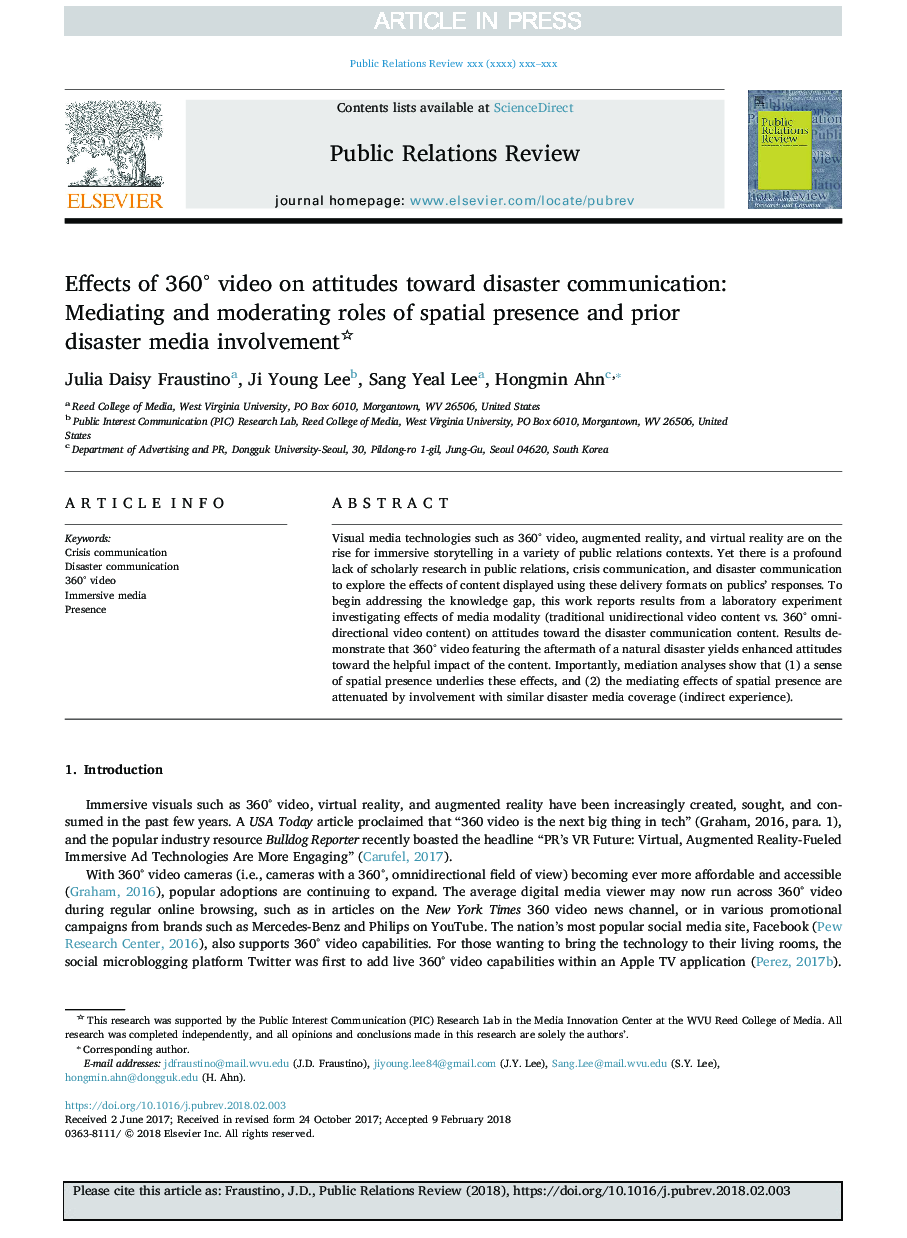| Article ID | Journal | Published Year | Pages | File Type |
|---|---|---|---|---|
| 6575789 | Public Relations Review | 2018 | 11 Pages |
Abstract
Visual media technologies such as 360° video, augmented reality, and virtual reality are on the rise for immersive storytelling in a variety of public relations contexts. Yet there is a profound lack of scholarly research in public relations, crisis communication, and disaster communication to explore the effects of content displayed using these delivery formats on publics' responses. To begin addressing the knowledge gap, this work reports results from a laboratory experiment investigating effects of media modality (traditional unidirectional video content vs. 360° omnidirectional video content) on attitudes toward the disaster communication content. Results demonstrate that 360° video featuring the aftermath of a natural disaster yields enhanced attitudes toward the helpful impact of the content. Importantly, mediation analyses show that (1) a sense of spatial presence underlies these effects, and (2) the mediating effects of spatial presence are attenuated by involvement with similar disaster media coverage (indirect experience).
Related Topics
Social Sciences and Humanities
Business, Management and Accounting
Marketing
Authors
Julia Daisy Fraustino, Ji Young Lee, Sang Yeal Lee, Hongmin Ahn,
